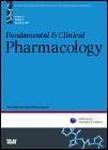版权所有:内蒙古大学图书馆 技术提供:维普资讯• 智图
内蒙古自治区呼和浩特市赛罕区大学西街235号 邮编: 010021

作者机构:CHU Poitiers Serv Pharmacol Clin & Vigilances 2 Rue Mil F-86021 Poitiers France CHU Poitiers Serv Neurol 2 Rue Mil F-86021 Poitiers France CHU Poitiers Serv Oncol Med 2 Rue Mil F-86021 Poitiers France CHU Poitiers Serv Informat Med 2 Rue Mil F-86021 Poitiers France CHU Poitiers INSERM CIC 1402 2 Rue Mil F-86021 Poitiers France
出 版 物:《FUNDAMENTAL & CLINICAL PHARMACOLOGY》 (基础及临床药理学)
年 卷 期:2018年第32卷第2期
页 面:227-233页
核心收录:
学科分类:1007[医学-药学(可授医学、理学学位)] 10[医学]
主 题:neoplasms molecular targeted therapy pharmacovigilance automatic data processing Diagnosis Related Groups-based information system adverse drug reactions
摘 要:The aim of this study was to assess an automated detection method of serious adverse reactions induced by oral targeted therapy (OTT) in patients with cancer, performed in the French Diagnosis Related Groups (DRG) database. Patients with cancer of the Poitiers hospital who started an OTT between 2014 and 2015 were included. This study focused on adverse drug reaction which required inpatient hospitalization (ADR(h)). All diagnoses coded in the DRG database for hospital stays that occurred within 3 months after OTT initiation were collected (potential ADR(h)). Filters (exclusion criteria) were automatically applied on potential ADR(h) to exclude diagnoses that were not adverse drug reactions (false positives). A pharmacovigilance review was carried out to identify ADR(h) in the medical records (reported ADR(h)). The sensitivity and specificity of the detection method were estimated for each filter combinations by comparison between potential and reported ADR(h). This study included 129 patients. The medical records review led to identify 19 ADR(h) (all coded in the DRG database) in 14 patients. To maintain a 100% sensitivity of the method detection, the best specificity obtained was 58.3% (95% IC: [55.2-61.4]).The use of restrictive filters (drug in the diagnostic label, specific diagnosis code for adverse cancer drug reaction) resulted in a 97.8% specificity (95% IC: [96.6-98.5]) with a 38.2% sensitivity (95% IC: [23.9-55.0]). Our method has detected the third of ADR(h) with an excellent specificity. Complementary experimentations in pharmacovigilance centers are necessary to evaluate the interest of this tool in routine in addition to spontaneous reporting.